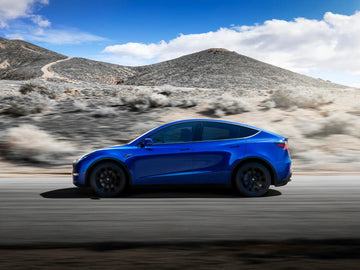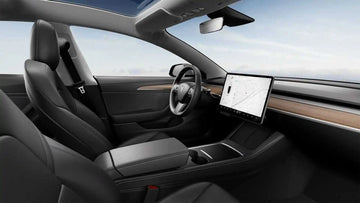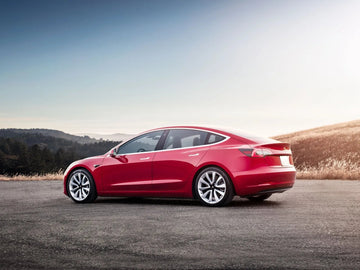Tesla has released a new beta update for its Full Self-Driving (FSD) software, and it's a major one. Tesla CEO Elon Musk recently tweeted that more than 100,000 Tesla models have participated in the FSD test project. With the update of the system version, the previous problems of the FSD will be obvious improvements that can provide a more reliable and confident driverless experience. This update version number v10.12, brings a bunch of upgrades to Tesla's cornering system when FSD is enabled. First, the release notes mention that Tesla has improved the underlying framework for participating in left-turn decisions.
The EV maker has improved the responses of modeled objects and helped the system handle noisy data more efficiently. Another notable change introduced by the update is that the frequency of trying uncomfortable turns has been reduced thanks to an upgraded object future prediction system when changing lanes. It’s worth noting here that, according to a report by Stern, the lane-changing feature bundled with the FSD has drawn scrutiny in Europe because it could be considered illegal in the region. As for the issue of left turns, a drone video from last year showing a Tesla using an FSD beta version making an unprotected left turn has also raised concerns in the US.

The update also upgrades the lane neural network architecture to improve the safety of turning at intersections. With the addition of 180,000 new video recordings to the training data cache, Tesla also said it has improved the accuracy of lane predictions. To ensure that moving from confined spaces becomes a hassle-free affair, the planner has been tuned to be less reliant on lane movement.
Another important improvement brought by the latest update is the reduction of false decelerations, thanks to improvements in recognizing the yellow light of traffic lights and lane behavior. Tesla was recently under federal investigation for a problem with its cars' "phantom brakes" that caused electric cars to also slow down unexpectedly at high speeds. Additionally, the latest FSD beta update improves understanding of stationary obstacles, thanks to the addition of a broader training dataset of 30,000 video clips.

In addition, when pedestrians and cyclists approach, the speed error probability of the self-driving system is also reduced. In addition, in the latest FSD beta, detection of distant passing objects has been upgraded; motion estimation and lane change planning have also been improved, which will ensure a comfortable lane movement in the event of a rough deceleration of the car.
Keep in mind, however, that the update is currently only rolling out to Tesla employees and will only reach testers after performance and stability have been assessed. In response to a user query about the latest FSD beta update, Elon Musk responded on Twitter that the V10.12 update will have a limited rollout and will see one in the FSD beta 10.12.2 release wider release. Notably, Musk also added that with FSD beta 10.12.2, the company will "likely" achieve a 95/10+ safety score.
However, the above feature optimizations may not be more attractive than the features that will be implemented in the next version. Elon Musk "spoiler" on Twitter. In version 10.13, the next major update, FSD will enable autonomous driving capabilities without the support of map data. This means that when the vehicle enters a road with a weak GPS signal or the map has not been updated, the FSD system will only rely on the visual sensing components to identify the road, vehicles and pedestrians, and conduct autonomous driving navigation.

However, Musk also reminded everyone that it will take several months for this feature to be launched, and it is a key test project of the Beta version, so this feature is definitely not the best state at the beginning, so don’t expect too much. In addition, in version 10.13, the left turn ability of FSD will also be greatly improved and optimized.
In addition, Tesla owners who participated in the FSD test asked whether the system would improve the recognition accuracy of "tag" positioning, especially in environments such as public roads, underground parking lots or hotel entrances. In this regard, Musk said that the team is currently working to solve this problem, so that the vehicle can accurately bring people to the "tag" position.

Tesla plans to expand the FSD system to Europe this summer, with more owners testing it. However, since some of the functions of FSD are illegal for the European transportation system, such as the automatic lane change function. Therefore, if Tesla’s fully autonomous driving system wants to land in Europe, it will either adjust its own functions, or it will have to wait until the European regulations are released.




















































